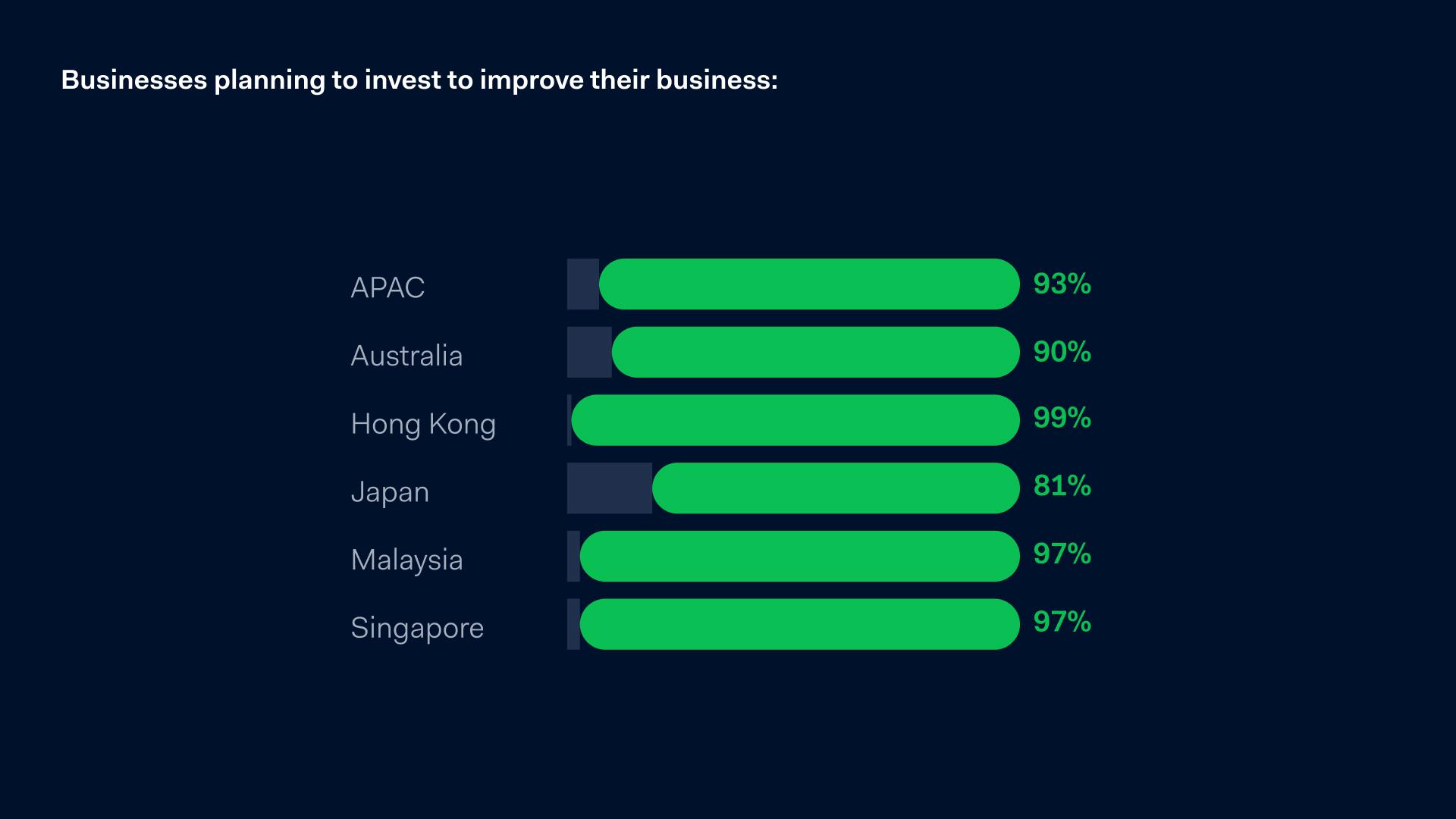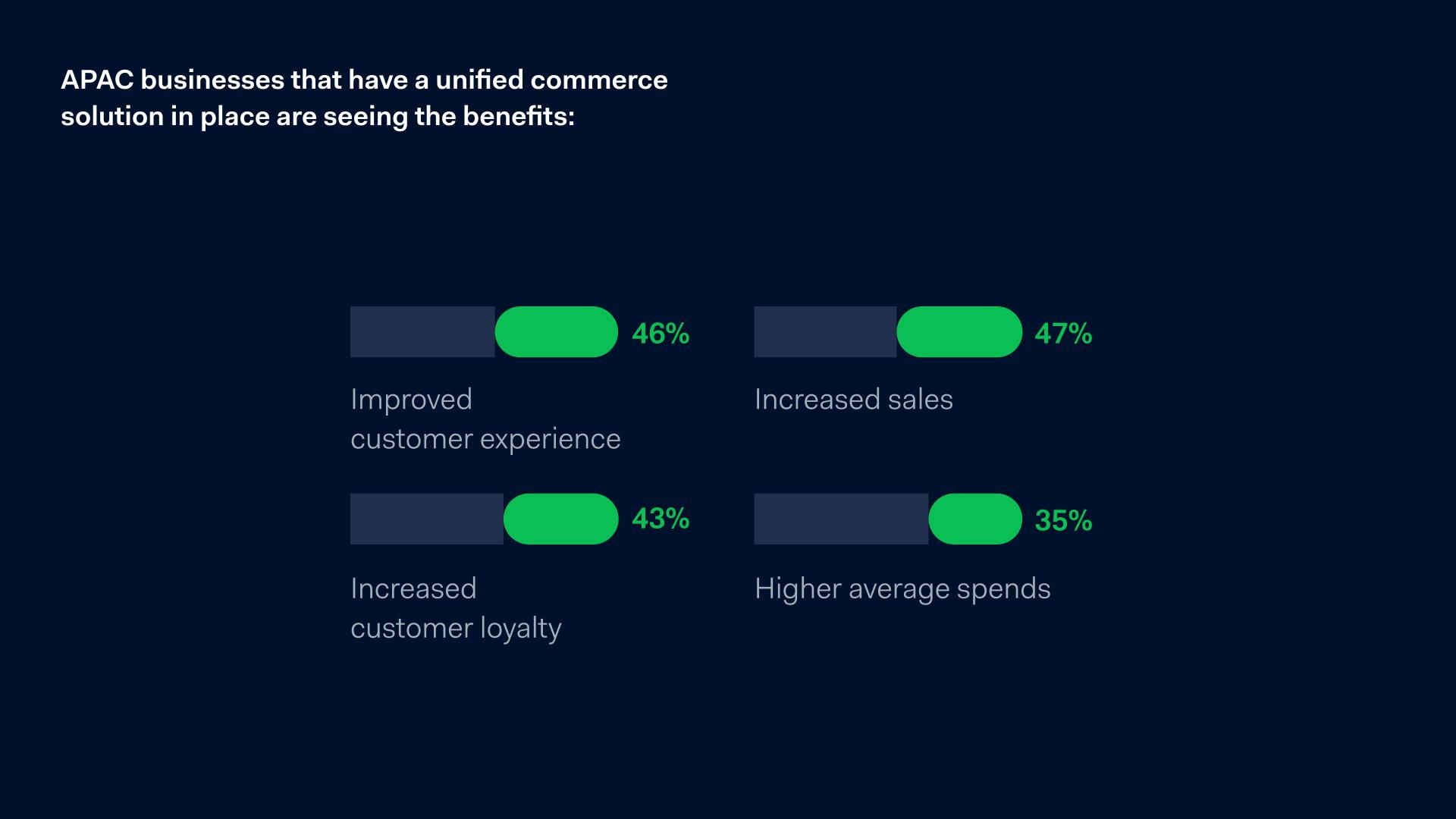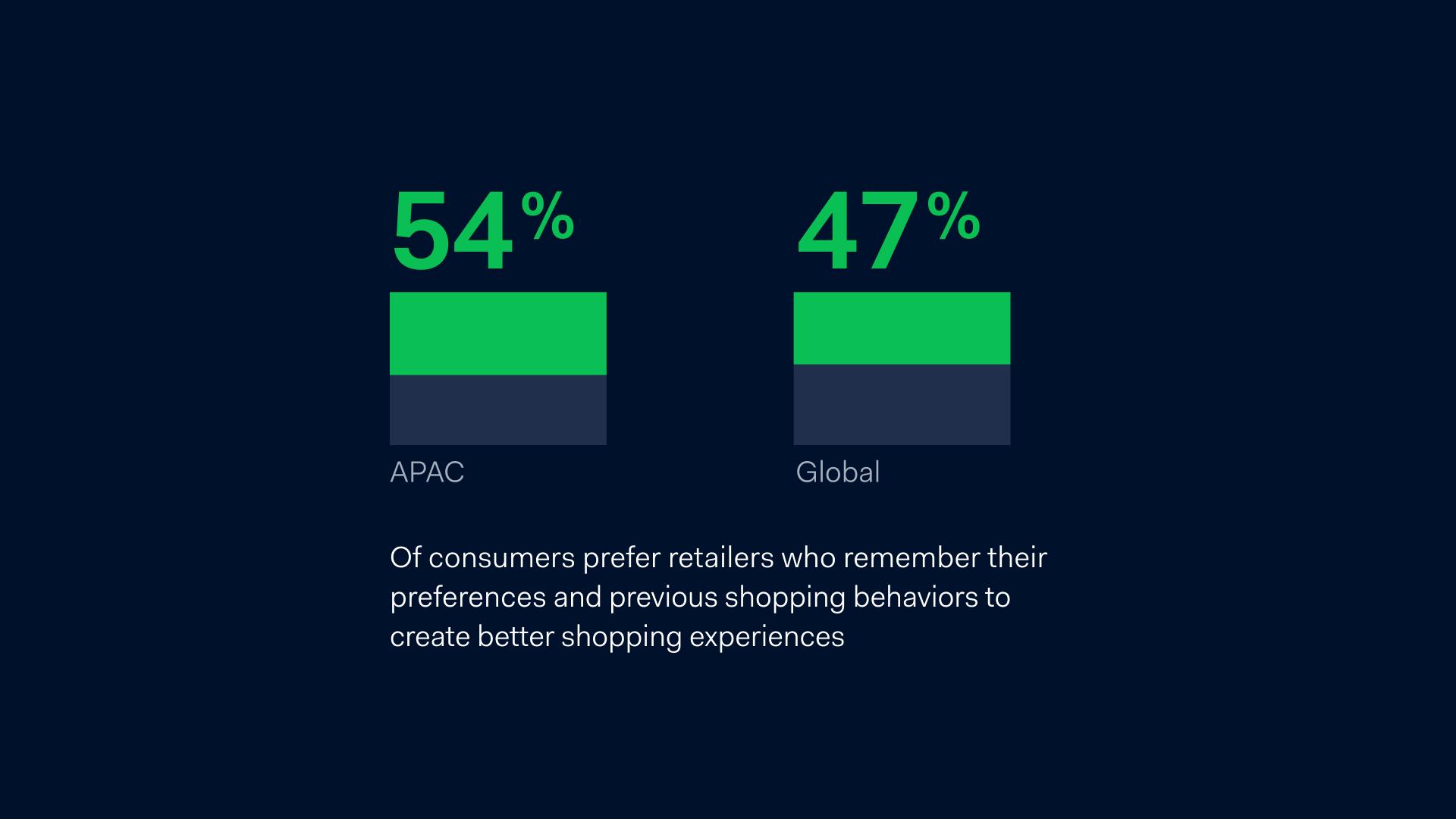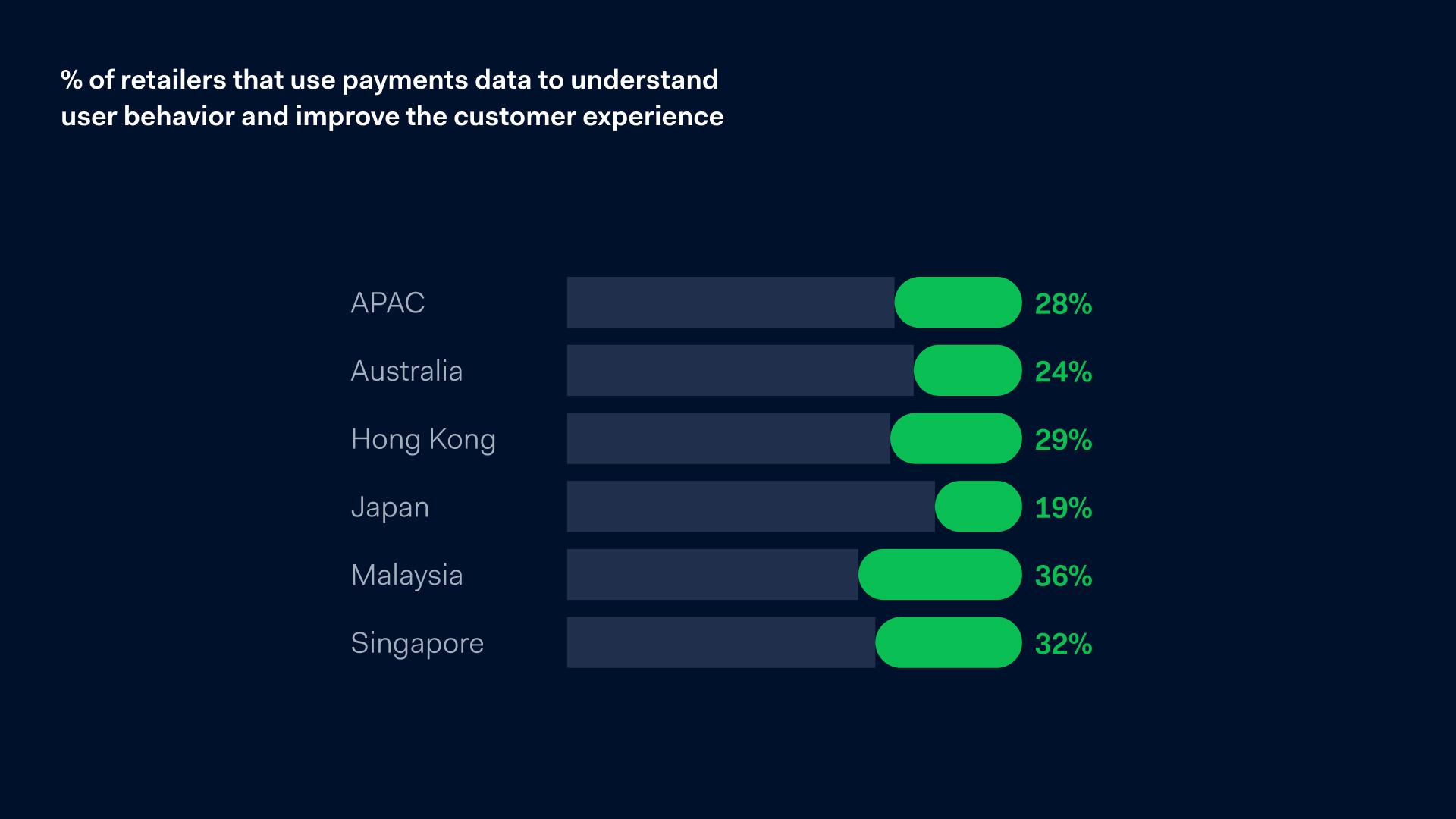Guides and reports
Digital transformation in retail is the key to resilience in APAC
The future of retail is digital. Our recent Retail Report research into customer behavior reveals that businesses that deliver seamless cross-channel shopping experiences are more likely to succeed.

The world of retail has been undergoing a digital transformation for some time, but online shopping went into overdrive over the last two years as the pandemic changed people’s daily routines. The new face of retail has brought several avenues of growth, including boosting overall competitiveness, unlocking the potential of unified commerce, improving the customer experience, and expanding the use of real time payments data.
The reports surveyed over 10,000 businesses from 23 markets, including 2,504 from APAC (Australia, Hong Kong, Japan, Malaysia, and Singapore) and 40,000 consumers from 26 markets, including 9,005 from APAC.
Access our various reports:
-Australia Retail Report
- Hong Kong Retail Report
- Singapore Retail Report
-Malaysia Retail Report
-China Retail Report
-Japan Retail Report
Connectivity boosts competitiveness
The pandemic has dramatically changed shopping for consumers and retailers. Over the last two years, businesses pivoted quickly to take their platforms online and worked hard to set themselves apart from competitors. This agility has paid off. Investments made to survive a temporary situation have resulted in long-term benefits. Nearly half of APAC businesses say they are now better positioned than before.
Customers, for their part, are likely to return to retailers that offer a superior (or more convenient) experience. And businesses have taken note and adapted, using technology to improve their offering. In APAC, 59% of consumers say retailers used technology well to make their products available during the pandemic. And an impressive 93% of APAC businesses say they are planning to invest further in technology in 2022.

Unified commerce is the key to loyalty
Everyone loves a little wiggle room, some flexibility. In retail, that flexibility offers customers access to new sales channels, varied payment methods, or more convenient returns and exchanges.
Shoppers tend to favor organizations that link online, in-store and in-app payments in a single system. Retailers using unified commerce – a single platform connecting a company’s physical and digital experiences with its backend systems – proved more resilient. Nearly half the businesses surveyed said unified commerce improved customer experience and increased sales, while 43% said it boosted customer loyalty. Customers like to have control over their experience, and businesses, in turn, benefit from having a holistic overview of shopper activity.

And there’s no going back now – 61% of APAC consumers expect retailers to continue delivering the cross-channel flexibility they provided during the pandemic.
Besides this, as customers juggled home, school, and work-related tasks, the appeal of shopping conveniently on phones grew. During the pandemic, 58% of APAC shoppers said they used shopping apps more frequently than before, higher than the global average of 50%. It’s perhaps no surprise that nearly half the businesses surveyed said online stores were able to offset losses at physical stores during this time.
Customers still love going to stores, but they want more
Still, there’s nothing like walking the aisles of a physical store, browsing an array of products, trying some on – and then making a choice. And few things compare to a day out shopping with friends, punctuated with lunch or a coffee break.
Going to stores remains extremely important to customers, particularly in APAC, where 62% of APAC consumers say they prefer shopping at a store (above the global average of 59%).
But what’s changing are the expectations around what happens inside the store. 64% of APAC consumers say they are more likely to shop with retailers that use technology to improve the shopping experience. Technology is changing the way people shop – from self-checkout kiosks to virtual mirrors that let you try on clothes, accessories and make-up, and new payment methods.
Customers increasingly want to be able to straddle online and offline when they shop. For instance, most consumers would be more loyal to a retailer that allows them to purchase an out-of-stock item in store and have it home-delivered. Shoppers also love having the ability to buy online and return in store. Unfortunately, only 22% of businesses in APAC offer this option compared with the slightly higher global average of 23%.
Real time payments data: a wealth of information
Shoppers want a more individualized shopping experience. And now with payments data, businesses can recognize, predict, and meet customer needs effectively. More than half of APAC consumers prefer retailers who remember their preferences for a tailored shopping experience and like receiving personalized advertisements or suggestions.

Access to real time data insights instead of historical data is a significant advantage. Payments data houses a wealth of information that can be used to identify popular product lines, inform inventory management, create personalized marketing campaigns, and guide decision making.
Still, a lot more needs to be done in the region. Only 28% of retailers in APAC use payment data to understand user behavior and improve the customer experience.

A personalized experience shouldn't come at the cost of privacy. In APAC, 41% don’t want retailers to use their purchasing behavior information without express permission. Companies, with their trusted partners, must stay on top of data privacy norms and remain compliant to protect shoppers and themselves from breaches and fraud.
The future of retail is a click away
The good news is that businesses are optimistic about the future and keen to invest in both online and offline opportunities. Retailers that use technology to reach and engage with consumers are set to thrive as customers favor shopping experiences that are more personalized and convenient.
There are of course experiences that can’t be enjoyed online so simply, and in-person shopping isn’t going away. But as billions of people now buy products online, one thing is for sure, the shift to digital channels is here to stay and we are excited to support and partner with companies driving that change.
Access our various reports:
-Australia Retail Report
-Hong Kong Retail Report
-Singapore Retail Report
-Malaysia Retail Report
-China Retail Report
-Japan Retail Report
Fresh insights, straight to your inbox
By submitting your information you confirm that you have read Adyen's Privacy Policy and agree to the use of your data in all Adyen communications.